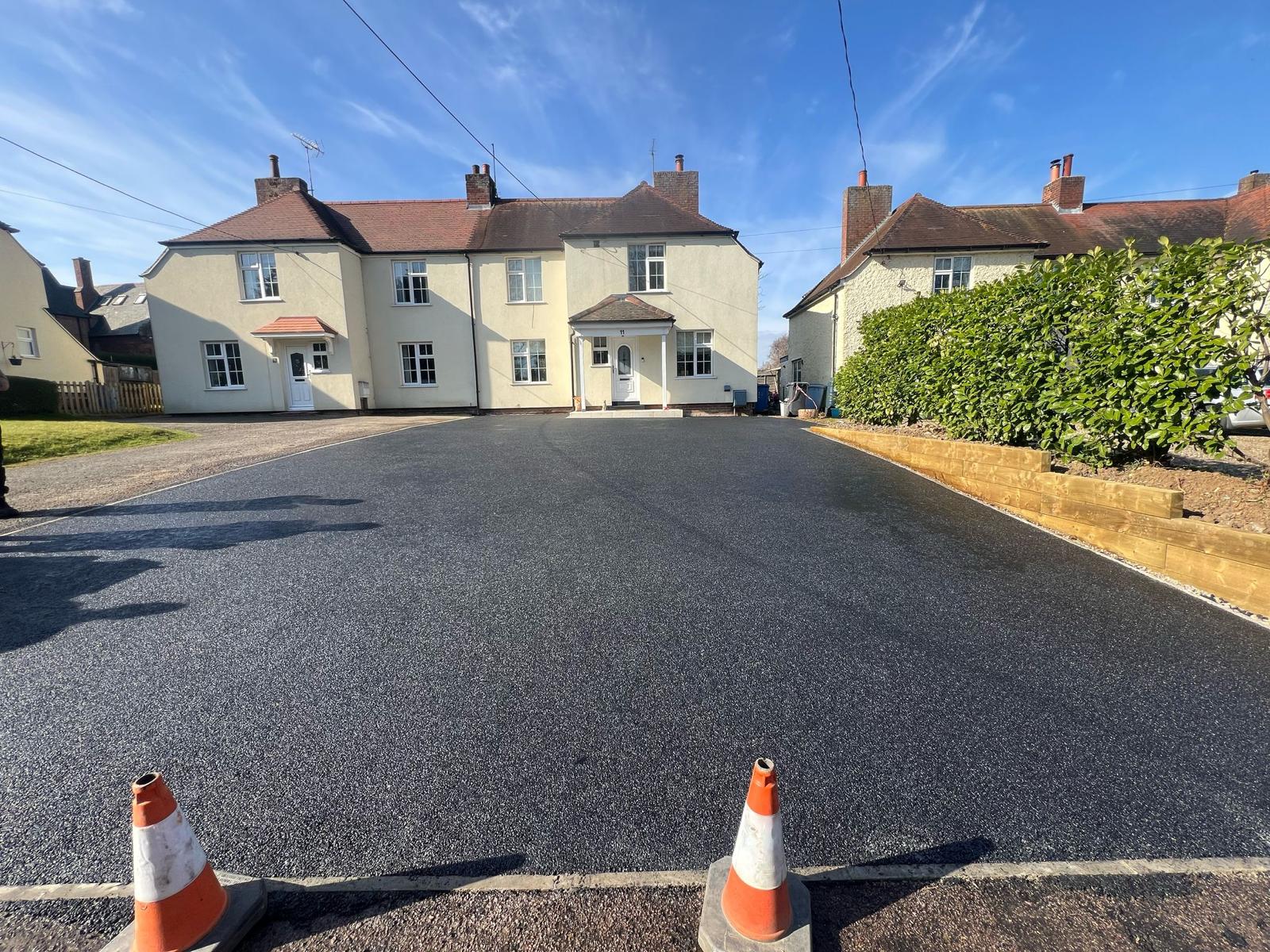What Is Tarmac Surfacing?
Tarmac is a highly durable surface, making it an excellent choice for driveways and commercial areas that experience heavy traffic. It is made from crushed aggregate stone mixed with bitumen. While the term “tarmac” originates from “Tarmacadam,” which used tar, modern applications almost exclusively use bitumen.
What Does Tarmac Look Like?
Freshly laid tarmac is typically a deep black or dark charcoal colour. Over time, ultraviolet rays from the sun will gradually lighten the surface. Although less common, tarmac is also available in other colours, such as red, blue, or green, primarily for safety or aesthetic purposes. Coloured tarmac tends to be more expensive than standard black.
Why Is Tarmac So Popular?
If you have seen a smooth, uniform driveway or car park, chances are it was laid with tarmac. It is a popular choice due to the speed with which it can be applied and its impressive durability. When laid correctly, tarmac looks smart and neat. It is also ideal for painted line markings or decorative finishes.
Common Applications of Tarmac Surfacing
Tarmac is widely used for domestic driveways, commercial car parks, forecourts, and public roads. It is a trusted surfacing solution, largely thanks to its toughness and resilience. Its versatility makes it suitable for both large and small areas. At Lakeside Surfacing, we provide tarmac surfacing services for homeowners, councils, and contractors.
How We Evaluate Site Suitability
As with all our surfacing options, including resin and natural stone, we always conduct a site visit to assess whether tarmac is the most appropriate choice for your needs.
Benefits of Tarmac Surfacing
- Aesthetic Appeal: When professionally laid, tarmac offers a smooth, neat finish.
- Performance: It handles heavy traffic and demanding conditions exceptionally well.
- Longevity: Tarmac has a good lifespan and, if damaged, is relatively simple to repair.
- Upgradability: Surfaces can be improved later if desired.
- Cost-Effectiveness: Tarmac often compares favourably with other surfacing options in terms of cost.
The Tarmac Installation Process
There are various grades of tarmac, each suited to different levels of traffic. For example, a residential driveway does not require the same grade as a supermarket car park. Installation begins with excavation, followed by a membrane and a sub-base layer, and then the tarmac itself, which is rolled to a smooth finish. The choice of base and top layers depends on the nature of the surface, whether it is a footpath or a major road.
Why Expert Installation Matters
Correct installation requires expertise to ensure durability. At Lakeside Surfacing, we bring years of experience and a long list of satisfied customers. For residential jobs, we consult directly with homeowners. For commercial projects, we typically follow detailed plans, often involving complex gradients or environmental considerations.
Managing Drainage and Surface Lifespan
Drainage is a key consideration in any tarmac project and may include side drainage, depending on the site. Tarmac strikes a strong balance between functionality and visual appeal. Its average lifespan is around eight years, though with proper maintenance, it can last much longer. Traffic volume also affects its longevity.
Maintenance Tips for Long-Lasting Results
To maximise the lifespan of a tarmac surface, it is essential to work with a skilled contractor. Proper groundwork is the foundation of a long-lasting finish. Maintenance is minimal; regular removal of debris is usually sufficient. In the unlikely event of damage, tarmac can be patched or resurfaced with minimal disruption.
Is Tarmac Right for UK Conditions?
Tarmac performs reliably in the UK climate and is unaffected by extremes of heat or cold. For larger areas, we often recommend tarmac over resin or gravel due to its superior durability. While tar and chip surfacing also has good longevity, tarmac generally lasts longer.
Get a Quote for Tarmac Surfacing
If you would like a no-obligation quote for tarmac surfacing, please contact us by phone or use our online form.

